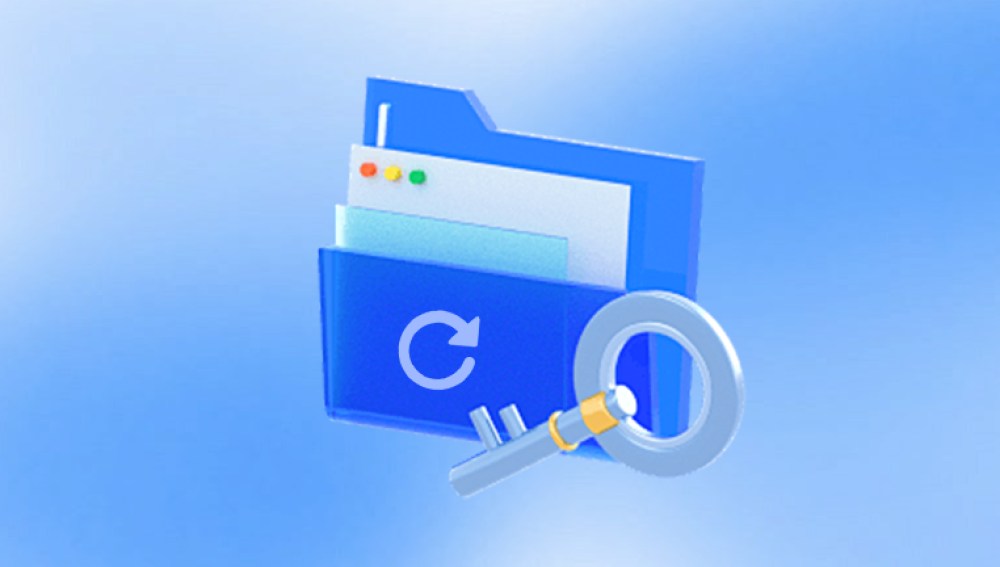System Restore is a built-in Windows feature designed to help users revert their system to a previous state. It is often used to resolve system issues caused by faulty software, driver updates, or system file corruption. However, when it comes to recovering deleted files, its effectiveness is often misunderstood.
System Restore creates "restore points" at specific intervals, such as before installing new software, updating drivers, or making major system changes. These restore points contain snapshots of system settings, registry files, and installed programs at a given time. If an issue arises, users can revert their system to a previous restore point to resolve the problem.

However, System Restore does not back up personal files like documents, photos, videos, or other user-created data. It primarily focuses on system files, settings, and installed applications. This means that if you delete a file from your computer and attempt to use System Restore, the file will not be restored unless it was stored in a protected system folder.
Will System Restore Recover Deleted Files?
The short answer is no, System Restore cannot recover permanently deleted personal files. It is designed to restore system settings and files but does not affect user files saved in locations like Documents, Pictures, or Downloads.
However, there are a few cases where System Restore may help indirectly:
Restoring Deleted Program Files – If a file was deleted as part of an uninstalled program, using System Restore might bring back the program along with its associated files.
Restoring System Configurations – If file loss was caused by a system issue, System Restore may help bring back a stable state where data recovery software can be more effective.
Recovering Shadow Copies – Some system restore points may include shadow copies of files, but these are typically limited to files stored in system directories.
If you need to recover personal files, you’ll need to use other methods.
Alternative Methods to Recover Deleted Files
Since System Restore isn’t the ideal solution for recovering lost files, let’s explore some effective data recovery methods.
1. Check the Recycle Bin
If the deleted files were removed using the "Delete" key or by dragging them to the Recycle Bin, they might still be recoverable:
Open the Recycle Bin.
Look for the deleted files.
Right-click on the files and select Restore.
If the files were permanently deleted (e.g., Shift + Delete), they won’t be in the Recycle Bin.
2. Restore from File History or Backup
Windows has built-in backup features that might help recover deleted files.
Using File History
File History automatically backs up versions of files stored in specific folders.
Open the folder where the file was stored.
Right-click and select Restore previous versions.
If available, choose an older version and click Restore.
Using Windows Backup
If you set up Windows Backup:
Open Control Panel > Backup and Restore.
Click Restore my files and follow the prompts.
3. Recover Files Using Shadow Copies (Previous Versions)
Windows sometimes creates shadow copies of files that may be accessible even after deletion.
Right-click the folder where the file was stored.
Select Properties > Previous Versions.
Look for a backup and restore the file if available.
4. Use Data Recovery Software
Drecov Data Recovery is a powerful and user-friendly software designed to recover lost, deleted, or corrupted files from various storage devices. Whether you accidentally deleted important documents, lost photos due to a system crash, or suffered from a formatted hard drive, Drecov Data Recovery offers a seamless solution to restore your data efficiently.
Supporting a wide range of devices, including hard drives, SSDs, USB flash drives, memory cards, and external storage, Drecov Data Recovery ensures flexibility for all users. Its advanced scanning algorithms quickly detect recoverable files, while its deep scan mode thoroughly searches for lost data, even in complex situations.
5. Check Cloud Storage or External Backup
If you use cloud services like OneDrive, Google Drive, or Dropbox, check the trash or deleted items folder in these services.
6. Contact a Data Recovery Professional
If the deleted files are critical and recovery software fails, consider seeking professional data recovery services. These experts can often recover files from damaged or formatted drives.
Preventing Future Data Loss
To avoid accidental file loss, follow these best practices:
Regularly Back Up Data – Use external hard drives or cloud storage.
Enable File History – This provides versioning for important files.
Be Cautious When Deleting Files – Avoid Shift + Delete unless necessary.
Use a Data Recovery Plan – Have software like Recuva or EaseUS installed for quick recovery.




